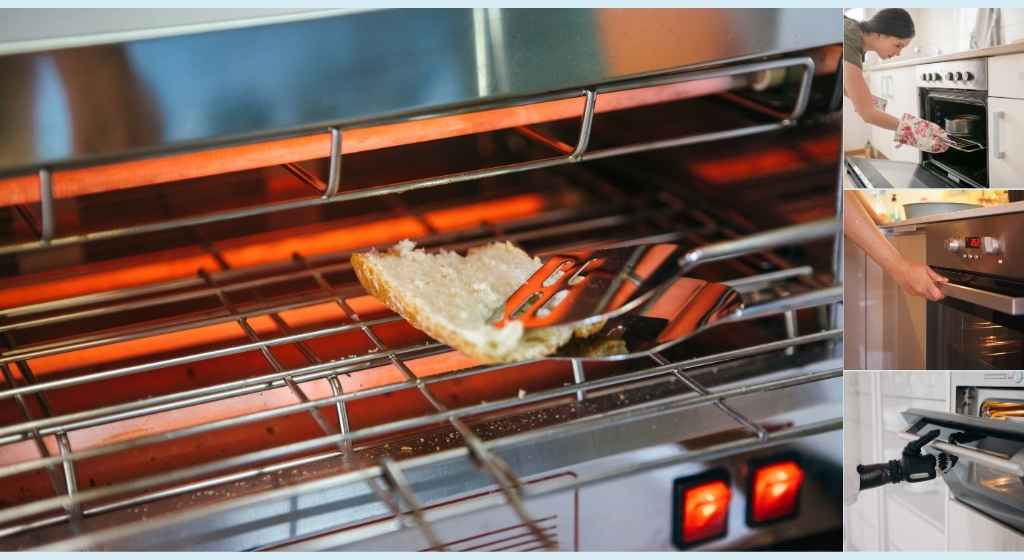Kernkonzepte und technologische Entwicklung
The main part converting electrical energy into heat—the heating element in an oven—directly affects baking efficiency, temperature uniformity, and equipment lifetime. Operating within temperature ranges of 200°C–1,200°C, modern oven heating elements are classified as nickel-chromium alloy (NiCr), ceramic PTC heating modules, and gas burners. Standards from ASTM D2487 specify that high-quality materials have thermal efficiencies of ≥92% and surface loads of 15 to 30W/cm².
Kennzahlenvergleich:
| Parameter | Nickel-Chromium (NiCr) | Keramisches PTC-Element | Gas Burner |
|---|---|---|---|
| Typical Power | 1,500–3,000W | 1,200–2,500W | 10,000–15,000BTU/h |
| Maximale Betriebstemperatur | 1.000 °C | 1.200 °C | 2,300°C |
| Jährliche Energiekosten | 50–80 | 40–65 | 300–500 |
| 5-Jahres-Ausfallrate | 25% | 15% | 10% |
Common consumer questions are answered in this article on the quantity, kinds, roles, and maintenance tips for oven heating elements.
Detailed FAQs and Technical Insights
How Many Heating Elements Are in an Oven?
Oven Types and Element Layouts
| Oven Type | Number of Elements | Typical Layout | Anmeldung | Technical Parameters |
|---|---|---|---|---|
| Household Convection | 2–4 | Top/bottom dual elements + rear fan | Home baking, roasting | Power density: 20W/cm² |
| Commercial Combi-Oven | 6–8 | Zone-specific dual elements | Restaurant production | Temp uniformity: ±3℃ |
| Compact Mini Oven | 1–2 | Single top or horizontal layout | Small kitchens | Surface load: 15W/cm² |
Technical Extensions:
Dual-element systems: Independent top/bottom control (ΔT ≤10℃), improving efficiency by 18%. An oven of 5,000 watts combines top elements (200–250 °C) for browning with bottom elements (180–220 °C) for even heat distribution.
Quad-element systems: Rear fans enhance airflow, achieving ±3℃ uniformity (0.5m³ cavity). Example: Wolf Gourmet ovens use PID algorithms for ±1℃ precision.
Which Element is Used in an Oven?
Material and Technical Comparison
| Typ | Material | Operating Temp | Power Density | Key Brands | Technical Advantages |
|---|---|---|---|---|---|
| Nickel-Chromium | NiCr 80/20 | 600–1,000°C | 20–25W/cm² | Samsung/Miele | Cost-effective, easy replacement |
| Ceramic PTC | Yttrium-stabilisiertes Zirkonoxid | 800–1,200°C | 15–20W/cm² | Bosch/Whirlpool | Self-limiting, 18% energy savings |
| Gas Burner | Stainless Steel + Copper | 1,500–2,300°C | 80–120W/cm² | Wolf/Range Rover | Rapid heating, suitable for searing |
Material Selection Guide:
NiCr: Ideal for households but requires annual oxide layer cleaning (20–50/maintenance).
Ceramic PTC: Long lifespan (10 years), 30% higher upfront cost.
Gas Burner: Requires thermocouple safety devices (165°C action threshold).
What is the Function of a Heating Element?
Heat Transfer Mechanisms
(1),Joule Heating:
Q=I² Rt
An example of a 240V NiCr element with 25Ω resistance, 10A current, and 500°C surface temperature is 2,400W.
Premium components have 94% thermal efficiency.
(2),Thermal Distribution Optimization:
Top/bottom synergy: Top elements (200–250°C) brown surfaces; bottom elements (180–220°C) ensure even cooking.
PID Control: ±1℃ accuracy (e.g., Miele ovens adjust power dynamically).
(3),Safety Systems:
Overheat fuses: Trigger at 165°C (UL 1098).
Thermistor monitoring: Real-time temperature deviation alerts (±2℃).
Is There a Heating Element in a Gas Oven?
Gas Oven Heating Systems
(1),Gas Burners:
Material: Stainless steel + copper alloy.
Power: 10,000–15,000BTU/h (≈2.9–4.4kW).
Ignition: Electronic pulse (>99% success rate).
Efficiency: Gas ovens operate at ≈40% efficiency vs. 70% for electric.
(2),Auxiliary Electric Elements:
Function: Cold-start preheating (30 seconds).
Type: Ceramic PTC (200–500W).
Savings: Hybrid ovens reduce energy costs by 30%.
Comparison:
| Parameter | Full Gas Oven | Hybrid Gas-Electric |
|---|---|---|
| Vorheizzeit | 15 minutes | 5 minutes |
| Annual Cost | 300–500 | 180–280 |
| Temp Uniformity | ±8℃ | ±3℃ |

Auswahl- und Wartungsstrategien
How to Choose Oven Heating Elements?
3D Decision Model
(1),Power Formula:
P = Q/ηΔT
Example: Baking 5kg meat (ΔT=200°C) requires 3.6kW (η=0.8).
Avoid Over-Specifying: Excess power increases energy waste (errors >±5% raise failure rates 2x).
(2),Material Matrix:
| Temperaturbereich (°C) | Empfohlenes Material | Kostenindex | Maintenance Cycle |
|---|---|---|---|
| 200–600 | Nickel-Chromium (NiCr) | 1.0 | Annual oxide cleaning |
| 600–1,200 | Yttrium-stabilisiertes Zirkonoxid | 3.5 | Replace every 3 years |
Key Features:
Longevity: Replace every 3 years for optimal efficiency.
Nickel-Chromium (NiCr):
Cost Efficiency: Baseline reference (1.0).
Maintenance: Annual oxide layer cleaning to prevent resistance deviation.
Yttria-Stabilized Zirconia (YSZ):
High-Temperature Performance: Stable up to 1,200°C.
(3),Certifications: Prioritize UL 1098/CE-certified brands (e.g., Bosch, Miele).
Maintenance and Troubleshooting
5 Tips to Extend Element Lifespan
(1),Clean Oxide Layers: Semi-annual vinegar soak (reduces resistance deviation).
(2),Replace Seals: Fluororubber gaskets every 2 years (prevents leaks).
(3),Avoid Dry Firing: Shut off at >600°C (prolongs life by 30%).
(4),Voltage Stabilizers: Use for voltage fluctuations >±10%.
(5),Thermal Imaging: Annual FLIR T650 scans (ΔT>8℃ triggers replacement).
Common Fault Codes:
| Code | Symptom | Ursache | Lösung |
|---|---|---|---|
| E1040 | Überhitzungsschutz | Oxide layer >0.5mm | Clean terminals |
| E1052 | High impedance | Contact resistance >0.8Ω | Tighten + apply grease |
| E1065 | Fuse failure | Overload | Sicherung ersetzen |
Zhongshan Jinzhong Electric Heating Tech – Ihr kompetenter Partner
Warum uns wählen?
(1),30+ Years Expertise: Supplied 5 million+ heating elements to brands like Midea and Gree.
(2),Custom Solutions: Non-standard sizes (e.g., NEMA 5-15P), OEM/ODM support.
(3),Quality Assurance:
100% aging tests (5-year simulation, 10 cycles/day).
3-year warranty (free replacement for non-human damage).
Case Studies:
Custom ceramic elements for Media reduced failures from 3% to 0.5%.
Developed quad-element modules (30W/cm² density), reducing volume by 25%.
References:
ASTM D2487 (Thermoplastic Testing)
IEC 60335-2-15 (Household Appliance Safety)
UL 1098 (Heating Element Certification)


